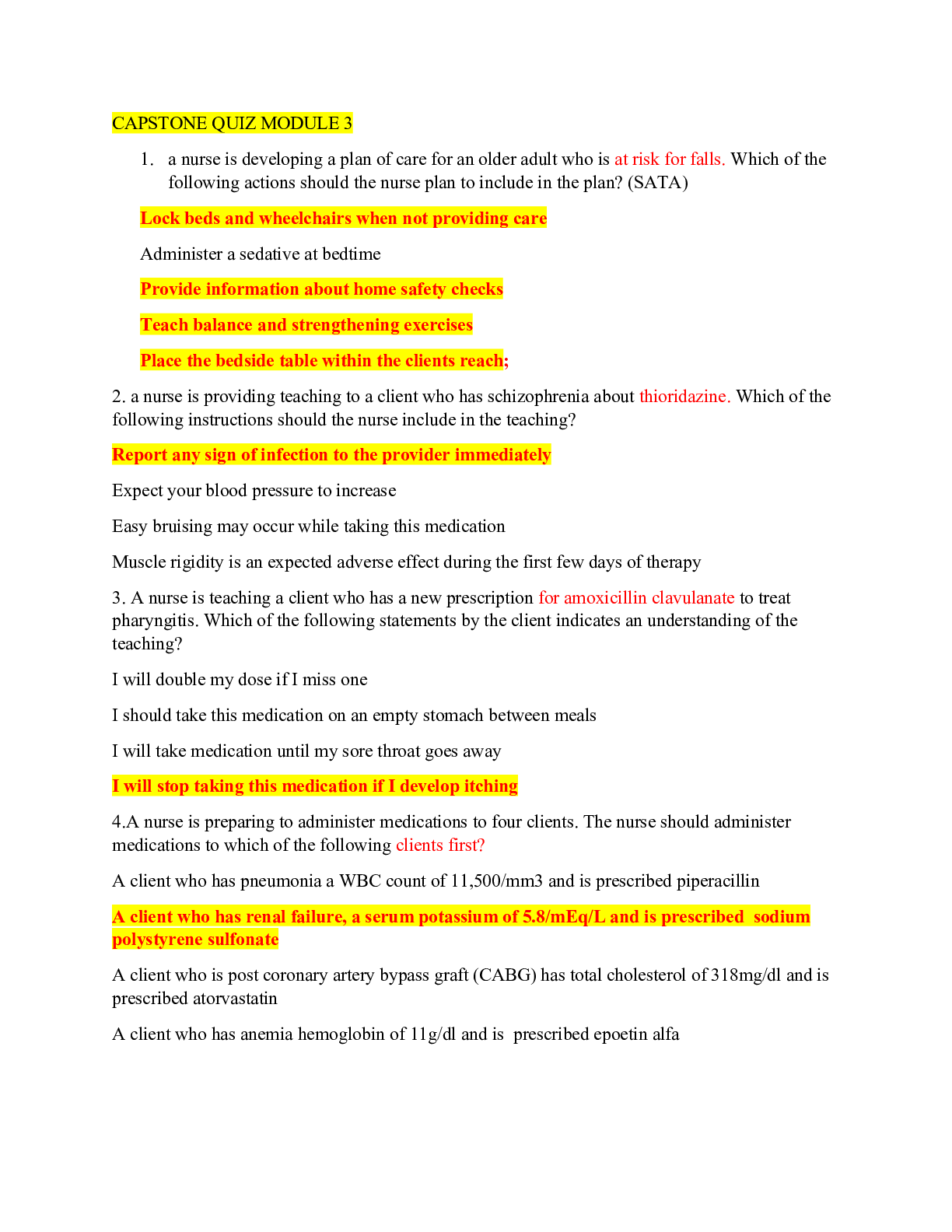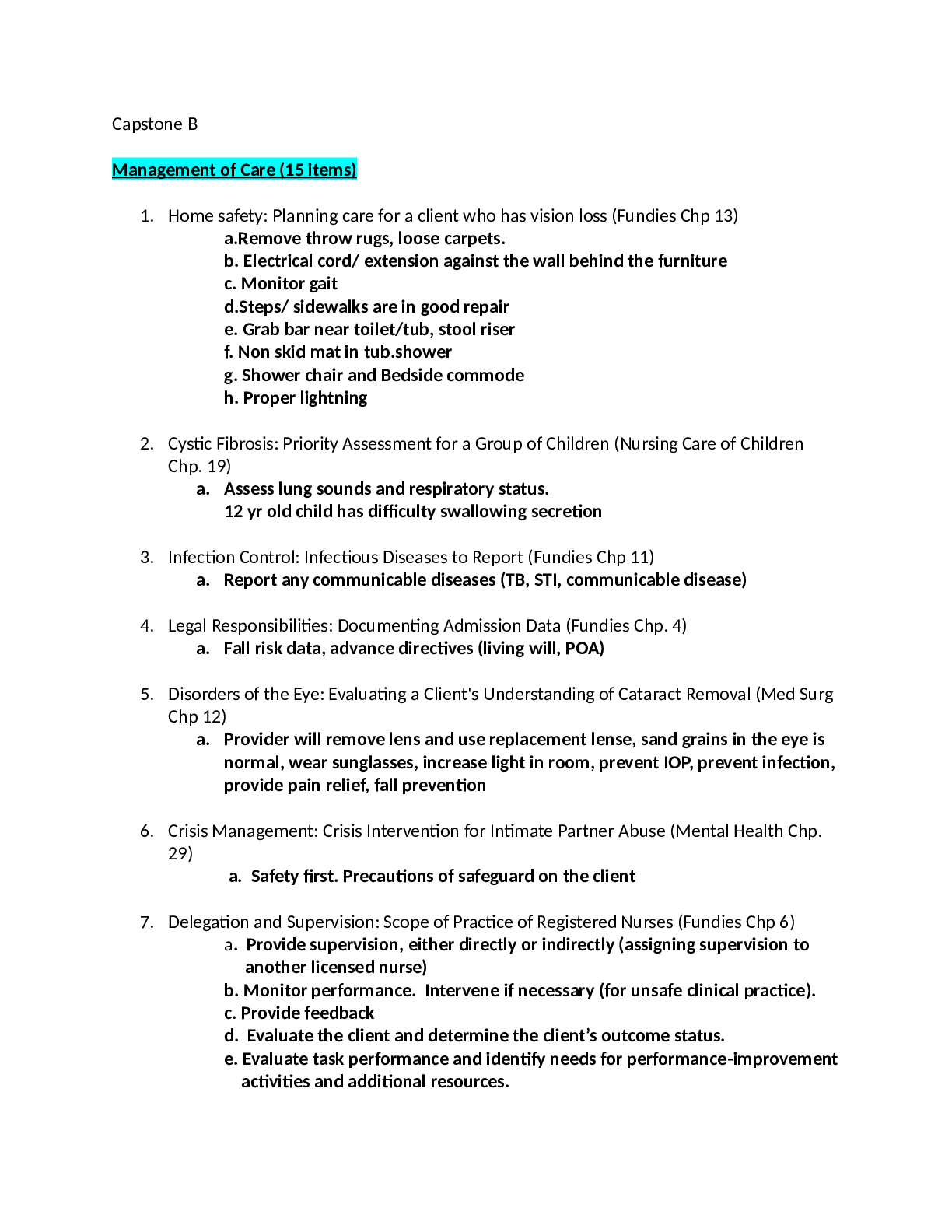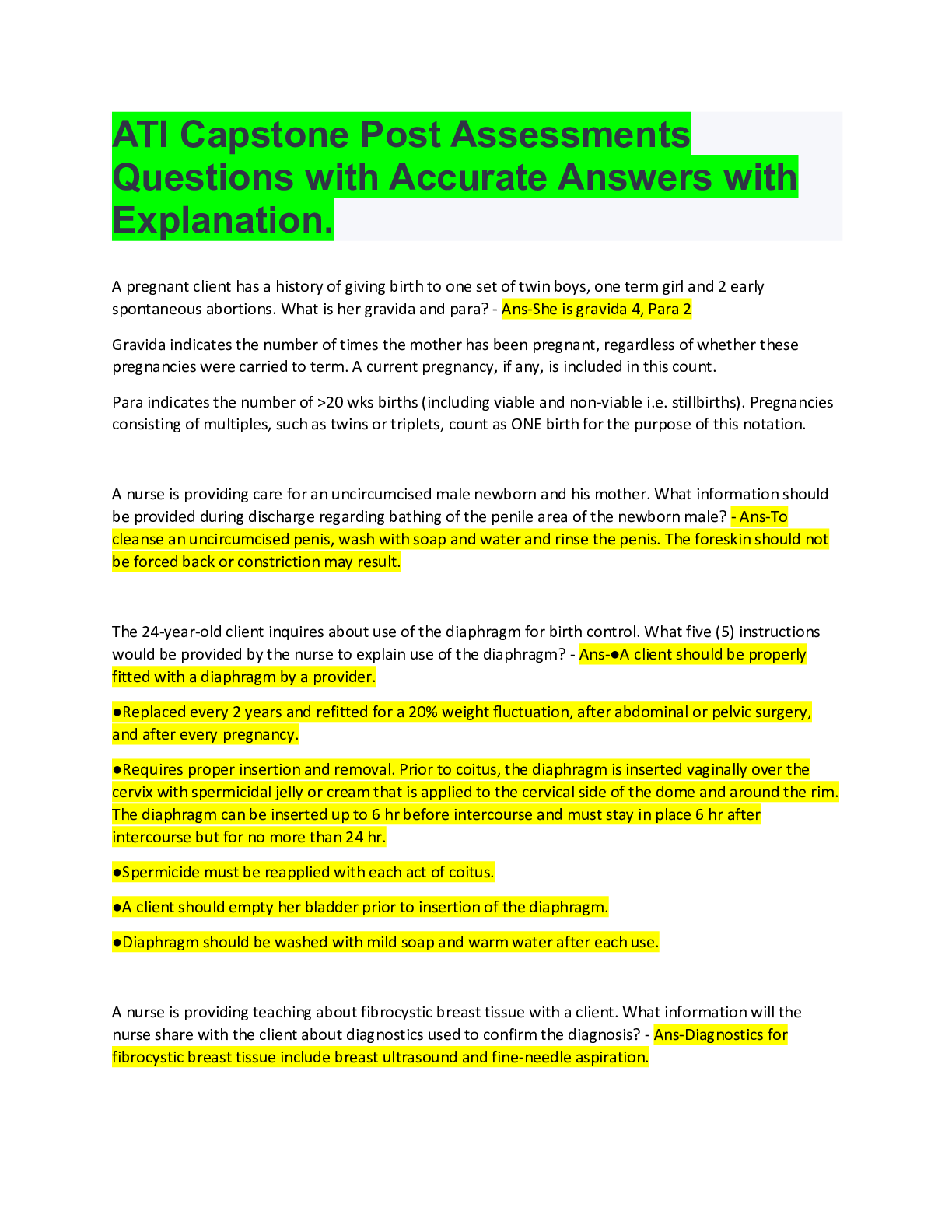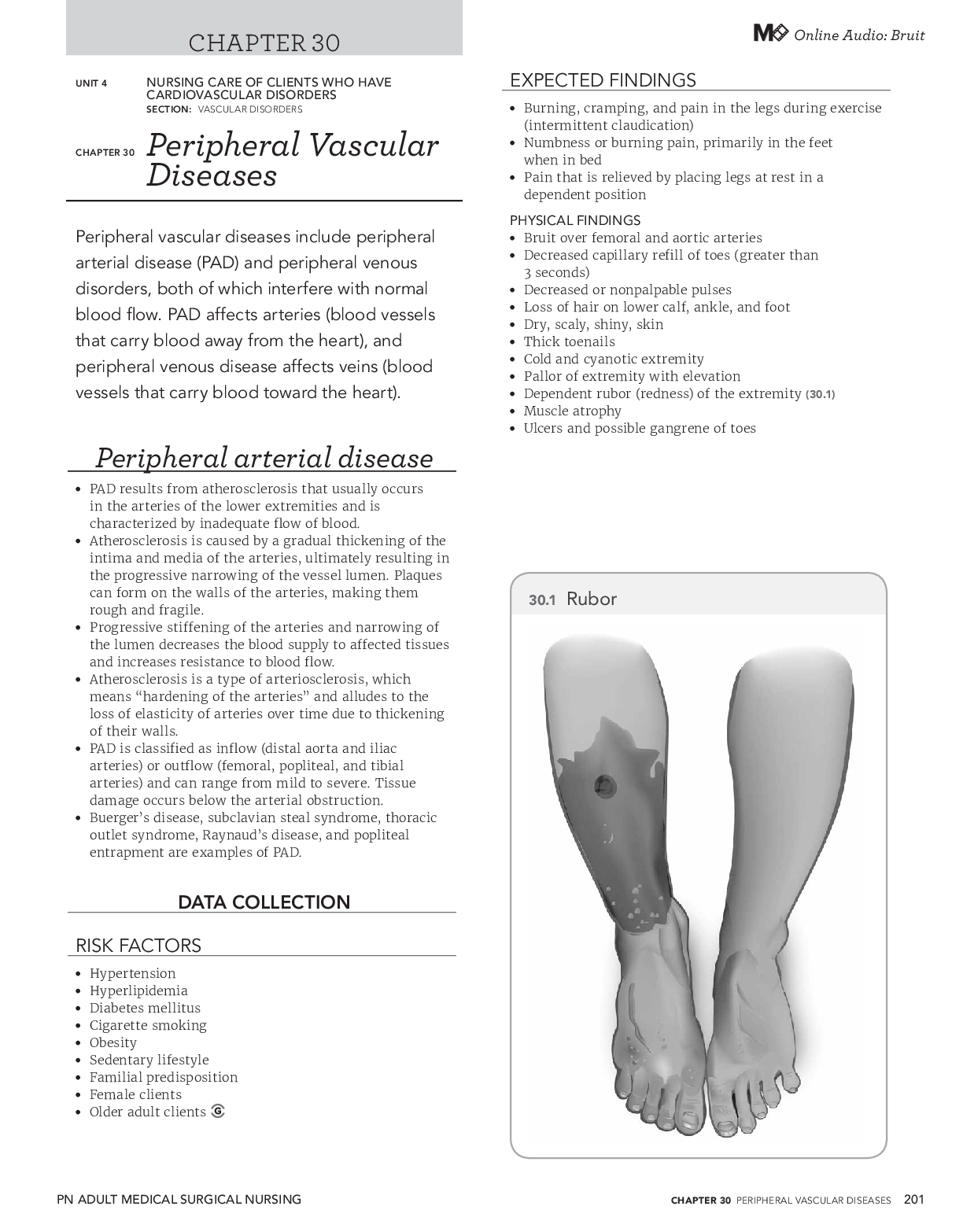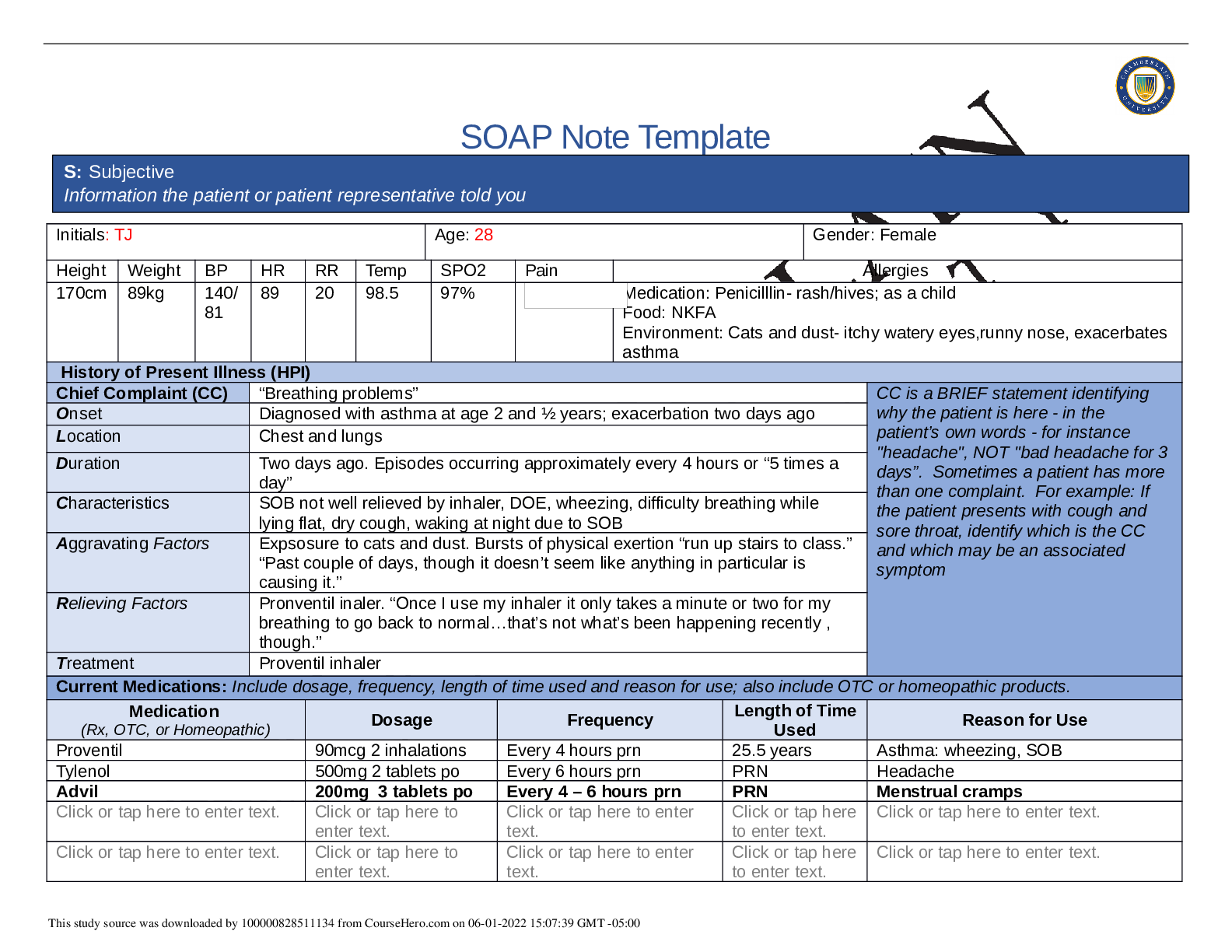*NURSING > CAPSTONE SIMULATION > Betty Burns Part 1 V3 PC -K (Basic DDx) (All)
Betty Burns Part 1 V3 PC -K (Basic DDx)
Document Content and Description Below
Betty Burns Part 1 V3 PC -K (Basic DDx) 48 years 5' 6" 165 pounds Betty Burns Chief complaint: Self-detected breast lump Below are the instructions for playing this DDx. case and your grading r... ubric: Note you will be allowed to push the Interview Progress Button and receive feedback on your history questions 10 times. a) % required history questions you asked (30% of grade) b) % required physical exam performed (30% of grade) c) differential diagnoses list (15%) d) ranking differential diagnosis list (10%) e) laboratory tests ordered (15%) Notice that getting the correct final diagnosis is not part of the graded case. This is because if you do well in each of the other parts, you WILL get the correct diagnosis. The software platform is designed to help you become proficient in the diagnostic reasoning process (all the steps prior to the final diagnosis), so you can apply this process in the real clinic setting. Key to minimizing medical errors is the clinical consideration of a broad differential diagnosis list and the selection of tests to either “rule in” or “rule out” these diagnoses. **** HELPFUL HINTS **** The Avatars and cases in the IHP case library are based on “real patients”. If the Avatar provides confusing information, this is intentional as we often what we find real patients provide incongruent information. For example, the Avatar may use the term “rash” for skin lesions that are not by medical definition a rash---just like real patients. Avatars may refuse to answer questions, just like real patients. Phrasing of questions IS important. Asking a “similar” question that is less specific may not be scored correct if it does not provide the clarity of information needed to narrow the differential. All of these small nuances in the case design were intentional and replicate the challenges you will face with real patients in a clinical setting. My recommendation is to pretend this is a real clinical patient encounter and select a time so you can enjoy the process and not feel pressured for time. Remember, you are not scored on whether you get the diagnosis correct, but rather have you mastered the process. Mastery of the process will help you avoid making diagnostic errors throughout your clinical career. Detailed Instructions Below: 1. Take the patient's history. Decide of this is a patient that can be treated as an outpatient; focused case – fewer history questions needed versus a comprehensive case where all components of a history. Document the chief complaint [Show More]
Last updated: 1 year ago
Preview 1 out of 15 pages

Reviews( 0 )
Document information
Connected school, study & course
About the document
Uploaded On
Jul 13, 2022
Number of pages
15
Written in
Additional information
This document has been written for:
Uploaded
Jul 13, 2022
Downloads
0
Views
95

.png)
